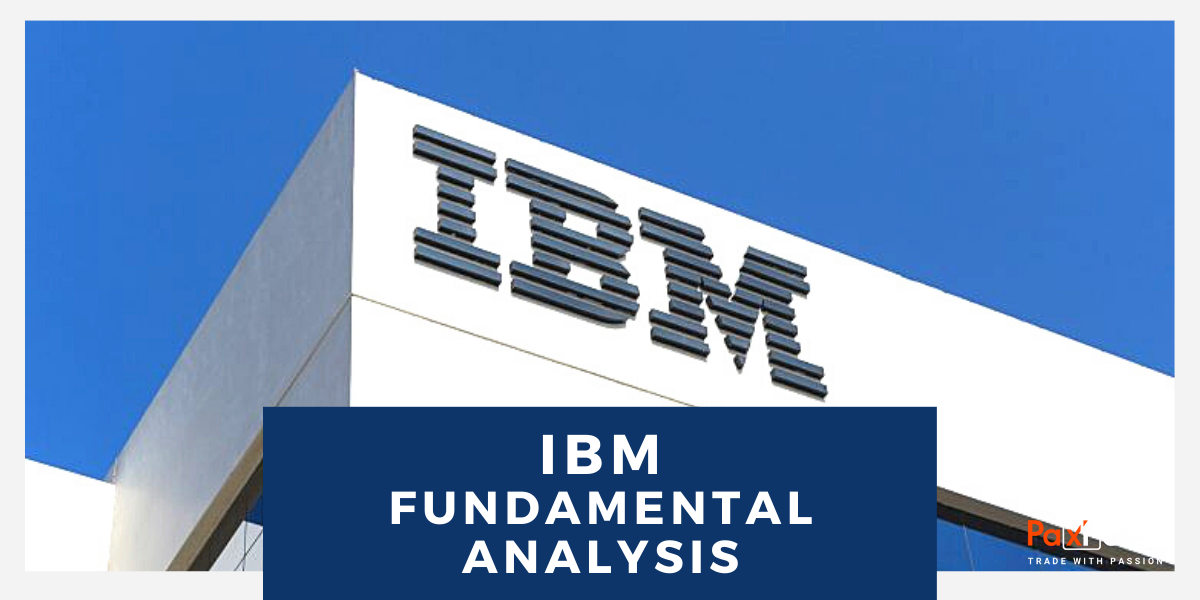
Source: PaxForex Premium Analytics Portal, Fundamental Insight
While tech stocks have generally had a bad time in 2022, IBM's centennial company has brought investors some pretty good results.
From its pandemic low at the beginning of 2020, IBM stock has increased more than 50 percent. The stock is slowly gaining momentum after hitting a bottom, while other tech stocks skyrocketed and then crashed spectacularly, wiping out the gains of the pandemic days.
Even though IBM was the best performer last year, investors can still buy the stock at a good price.
IBM has been working on its transformation for nearly a decade. It abandoned legacy businesses where it had no influential competitive advantage, invested in cloud computing, allocated $34 billion to buy Red Hat to support its position in cloud computing, and spun off its huge managed infrastructure services business.
IBM is much smaller than it used to be, but its product portfolio has now shifted toward more expensive hardware, software, and services. More than 70% of IBM's revenue now comes from software and consulting, and hybrid cloud revenue has reached $22.2 billion in the past 12 months.
IBM's mainframe business keeps growing, and entire industries depend on these unwieldy systems. About 90 percent of the world's 50 largest banks still run on IBM mainframes.
Judging by IBM's latest results, the company may have finally found its way. In the third quarter, revenue was up 15 percent year-over-year on a currency-adjusted basis, and the company is on track to deliver strong revenue growth as well as a free cash flow of about $10 billion. While this year's recession may pose some challenges for IBM, the company should otherwise be able to deliver solid earnings growth going forward.
With a market capitalization of about $127 billion, IBM stock is trading at less than 13 times its projected free cash flow. Based on analysts' average earnings forecast for 2023, the stock is trading at a price/earnings ratio below 15.
IBM intends to deliver mid-single-digit revenue growth and high-single-digit free cash flow growth through 2024. Much of this growth will come from software and consulting, while the hardware business should remain roughly flat given product cycles. As IBM shifts to software, the company has plenty of room to grow margins over time.
It is worth noting that IBM has a substantial amount of debt. Total corporate debt, excluding debt related to the finance business, was $39.7 billion at the end of the third quarter. The company practically stopped buying back its own shares after the deal with Red Hat, and its dividends are already eating up about $6 billion a year. In other words, investors shouldn't expect a significant increase in dividends or a resumption of the share buyback program until free cash flow increases.
Speaking of dividends, it should be noted that IBM offers a generous dividend. A quarterly payout per share of $1.65 gives a dividend yield of about 4.7%. Dividends have been growing very slowly since 2020, and that trend is likely to continue in the future. Nevertheless, IBM's dividend yield is more than double that of the S&P 500.
IBM stock won't hit 10x growth anytime soon, but the company seems to be finally set up for continued revenue and free cash flow growth as it takes advantage of the demand for hybrid cloud computing. Given IBM's solid dividend and attractive valuation, this could be an even better year for the company.
As long as the price is below 143.00, follow the recommendations below:
- Time frame: D1
- Recommendation: short position
- Entry point: 140.66
- Take Profit 1: 137.00
- Take Profit 2: 133.00
Alternative scenario:
If the level of 143.00 is broken-out, follow the recommendations below:
- Time frame: D1
- Recommendation: long position
- Entry point: 143.00
- Take Profit 1: 146.00
- Take Profit 2: 150.00













